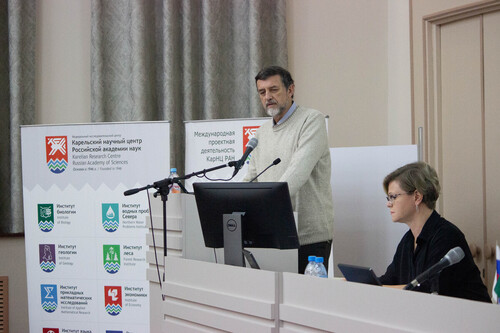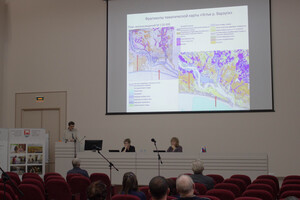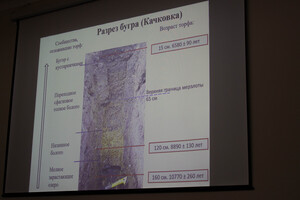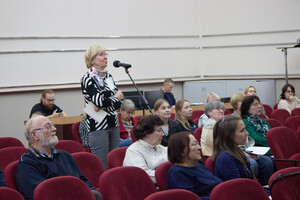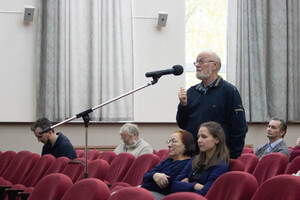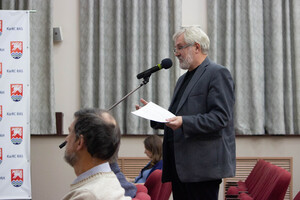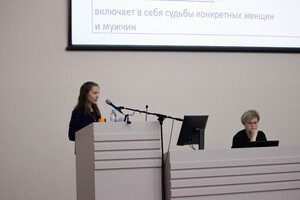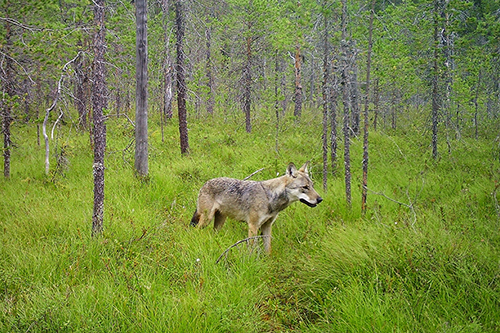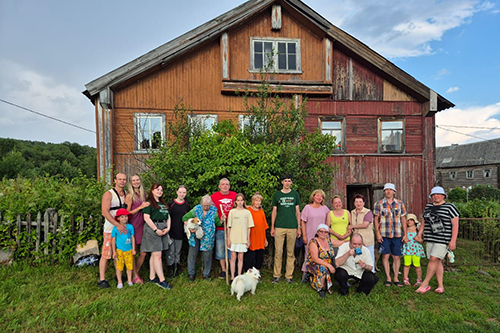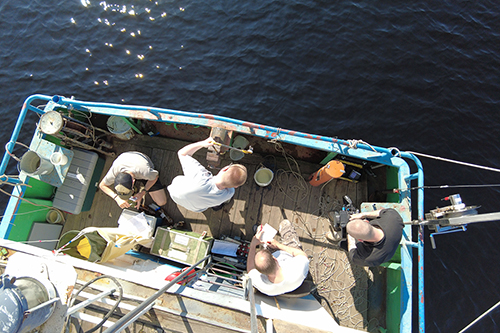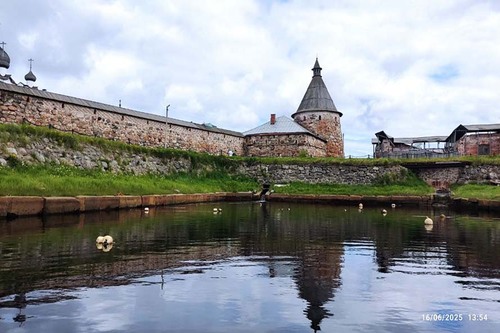
KarRC RAS Director General Olga Bakhmet and Institute of Biology KarRC RAS Deputy Director for Science Natalia Kaznina
The main agenda of the session was opened with a presentation by Senior Researcher at the Laboratory for Ecological Monitoring and Modeling of the DMR KarRC RAS Aleksey Kravchenko. He presented the results of studying the natural ecosystems of the White Sea Tersky Coast during expeditions in 2021–2022. Its participants were specialists in different research fields – staff of the DMR, Institute of Biology, Institute of Geology, and Forest Research Institute of the Karelian Research Centre RAS.
The unique flora and fauna of the northeastern part of the Kola Peninsula have long attracted scientists: studies of the Tersky Coast started back in the 19th century. Nonetheless, these areas are still understudied, largely because of their poor accessibility. The expeditions of KarRC RAS were facilitated by the research vessel Ekolog, owing to which the participants managed to survey remote areas of the Kola Peninsula.
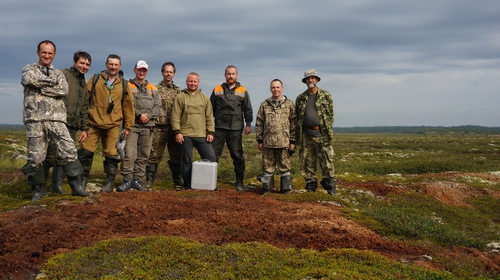
Participants of the 2021 expedition: Nikolai Petrov, Mikhail Kozhin, Boris Raevsky, Yulia Tkachenko,
Stanislav Kutenkov, Aleksey Kabonen, Pavel Ryazantsev, Pavel Medvedev, and Aleksey Kravchenko.
Photo from N. Petrov’s archives / KarRC RAS Department for Multidisciplinary Research
In particular, as Aleksey Kravchenko recounted, the scientists surveyed palsa mires – unusual natural objects. The palsa mounds rest upon permafrost. Global warming is shifting the southern limit of permafrost northwards. Changes in palsa mires of the Kola Peninsula also act as an important marker of possible climate change. They were studied using an integrated approach incorporating aerial photography, ground-penetrating radar surveys, computer simulations, and vegetation descriptions. As a result, scientists detected partial degradation of the palsa mires. The changes involve also a transformation of the plant communities and an increase in biogenic gas fluxes. During the fieldwork, scientists established the basic framework for monitoring permafrost inside the palsa mires.
Another unique natural phenomenon that captured scientists’ attention is the Kuzomen Sands, situated on the northern shore of the White Sea. They are sometimes called “a desert in the Arctic”. Scientists believe it formed both as a result of natural factors as well as under human impact. Longshore bar sand proved to be more resistant to aeolian erosion owing to its higher density and finer grain size composition.
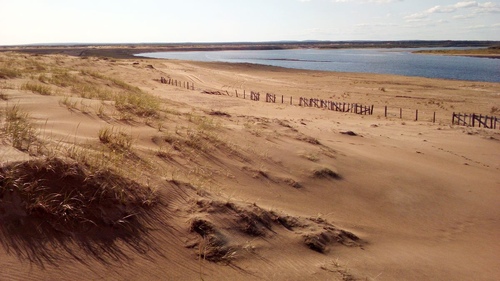
Kuzomen sands. Photo by N. Petrov / KarRC RAS Department for Multidisciplinary Research
During the expeditions, specialists continued the work to create modern vegetation maps through decoding of satellite imagery. Using data from remote sensing of the Earth in combination of flora surveys, they mapped the vegetation of south-eastern Murmansk Region. The thematic vector map of a general topographic scale covers over 4 million hectares.
Finally, while working on the Tersky Coast, researchers gathered extensive collections of vascular plants and insects and gained new data on the distribution and abundance of rare and red-listed species. This information is especially timely as the new edition of the Red Data Book of the Murmansk Region will be published next year.
– An output from the expeditions is the newly created geographic information web portal “Àrctic Zone of Eastern Fennoscandia” containing all the available data. We suggest supplementing it with other information on this territory, - Aleksey Kravchenko summarized.
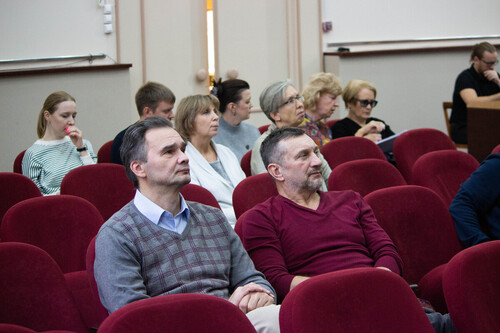
Members of the KarRC RAS Learned Council meeting of October 26
During the discussion of the presentation, Chief Researcher at the Northern Water Problems Institute KarRC RAS Nikolai Filatov suggested including the data produced by the colleagues into the electronic Atlas of the White Sea created by Karelian scientists earlier.
Summing up, KarRC RAS Director General Olga Bakhmet pointed out that the speaker presented the work of many staff members who participated in the expeditions.
– It is the approach involving specialists of different profiles that makes it possible to assess these territories the most comprehensively. For example, palsa mires were studied by mire scientists, geologists, geophysicists, experts in greenhouse gas emissions, botanists, and soil scientists. Such versatile information ensures more in-depth conclusions, – the Director emphasized.
The second presentation at the meeting of the KarRC RAS Learned Council, regarding the “Economic opportunities and practices of Karelian peasant women outside of their family in the late 19th – early 20th centuries” was given by Senior Researcher at Ethnology Section of the Institute of Linguistics, Literature and History KarRC RAS Yulia Litvin. The scientist's talk will be covered in more detail later in the news section of the KarRC RAS website.
The meeting also discussed some operational aspects of research and reporting activities under Russian Science Foundation grants as well as changes in the regulations on the annual competition of papers by KarRC RAS young scientists.
Photos by Viktoria Shvetsova / KarRC RAS Science Communications Service




